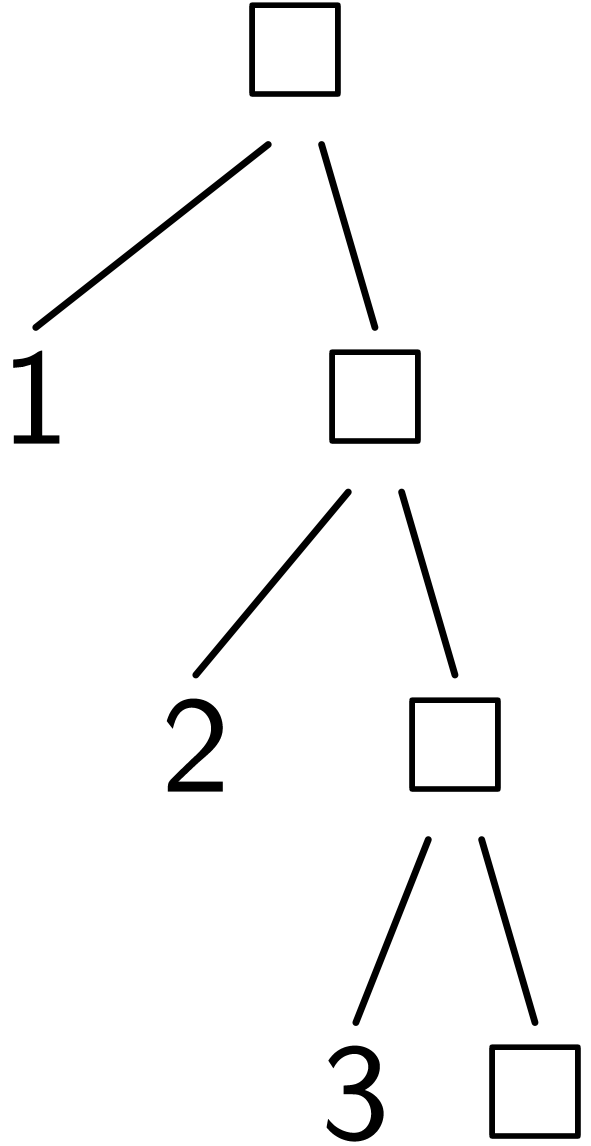 )
)
|
零基础SICP:第10课
|
|
数据抽象导引 |
Introduction to Data Abstraction |
实例:有理数的算术运算 |
Example: Arithmetic Operations for Rational Numbers |
抽象层级 |
Abstraction Barriers |
数据意味着什么 |
What Is Meant by Data? |
层次性数据和[闭包性质] |
Hierarchical Data and the Closure Property |
序列的表示 |
Representing Sequences |
层次性结构 |
Hierarchical Structures |
序列作为一种约定的接口 |
Sequences as Conventional Interfaces |
利用函数式编程三板斧(映射/过滤/折叠)和衍生算子描述数据处理逻辑。
定义数据:list
|
|
通过定义一组逻辑自洽的选择函数和构造函数,定义数据。
>
(list 1 2 3 4)
(1 2 3 4)
>
(cons 5 (list 1 2 3 4))
>
()
>
>
(car (list 1 2 3 4))
>
(cdr (list 1 2 3 4))
>
(cadr (list 1 2 3 4))
>
(list-ref (list 1 2 3 4) 3)
>
>
(list? (list 1))
>
(list? 1)
>
(eq? () ())
>
(eq? () (list 1))
>
(null? ())
>
(length (list 1 2 3 4))
三板斧之映射:map
|
|
map是S7 Scheme的内置函数
> |
(define (square x) (* x x)) |
> |
(map square (list 1 2 3 4 5)) |
> |
(map (lambda (x) (* x x)) (list 1 2 3 4 5)) |
> |
(map (lambda (x) (+ x 1)) (list 1 2 3 4 5)) |
> |
(map (lambda (x) (append x "@liii.pro")) (list "da" "nian")) |
> |
(map odd? (list 1 2 3 4 5)) |
> |
三板斧之过滤:filter
|
|
SRFI-1: List Library中定义了filter,我们需要自己实现
>
(define (filter pred? seq)
(cond
((null? seq) ())
((pred? (car seq))
(cons (car seq)
(filter pred? (cdr seq))))
(else (filter pred? (cdr seq)))))
filter
>
(filter odd? (list 1 2 3 4 5))
>
(filter even? (list 1 2 3 4 5))
>
(filter (lambda (x) (> x 3)) '(1 3 5))
>
(filter (lambda (x) (= x 3)) ‘(1 3 5))
>
(filter (lambda (x) (> x 20))
(map (lambda (x) (* x x))
(list 1 2 3 4 5 6)))
>
三板斧之折叠:fold和fold-right
|
|
SRFI-1: List Library中定义了fold,我们需要自己实现
>
(define (fold op initial seq)
(if (null? seq)
initial
(fold op
(op (car seq) initial)
(cdr seq))))
>
(define (fold-right op initial seq)
(if (null? seq)
initial
(op (car seq)
(fold-right op
initial
(cdr seq)))))
>
(fold + 0 (list 1 2 3 4))
10
>
(fold-right + 0 (list 1 2 3 4))
10
>
(fold cons () (list 1 2 3 4))
(4 3 2 1)
>
(fold-right cons () (list 1 2 3 4))
(1 2 3 4)
>
理解左折叠fold
|
|
通过可视化理解(fold cons () (list 1 2 3))
; Step 0
(fold cons
()
 )
)
; Step 1
(fold cons
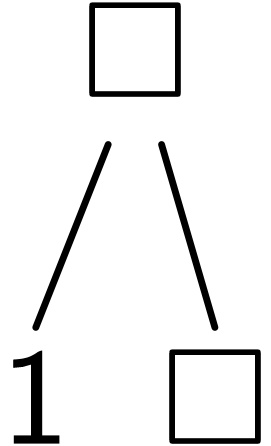
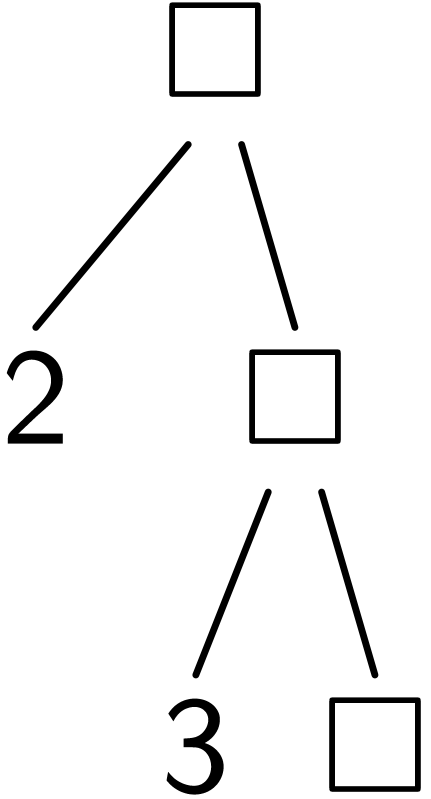 )
)
; Step 2
(fold cons 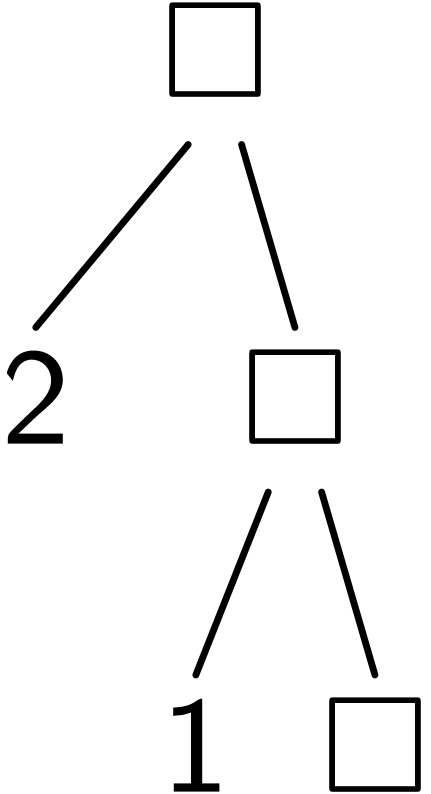
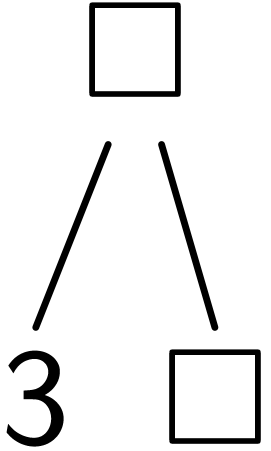 )
)
; Step 3
(fold cons 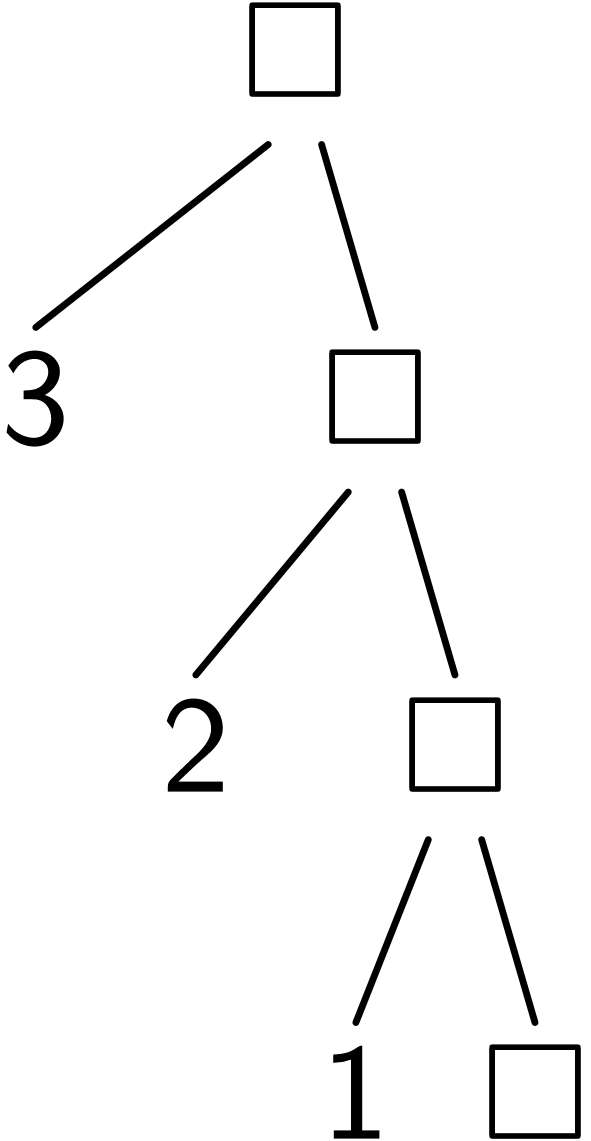 ())
())
理解右折叠fold-right步骤0-1
|
|
通过可视化理解(fold-right cons () (list 1 2 3))
; Step 0
(fold-right cons ()  )
)
; Step 1
(cons 1
(fold-right cons ()  )))
)))
理解右折叠fold-right步骤2-3
|
|
通过可视化理解(fold-right cons () (list 1 2 3))
; Step 2
(cons 1
(cons 2
(fold-right cons ()  )))
)))
; Step 3
(cons 1 (cons 2 (cons 3 ()))))

衍生算子:flatmap
|
|
> |
(define (flatmap f seq) (fold-right append () (map f seq))) |
flatmap
> |
(flatmap (lambda (x) (list x x)) (list 1 2 3 4)) |
(1 1 2 2 3 3 4 4)
> |
(map (lambda (x) (list x x)) (list 1 2 3 4)) |
((1 1) (2 2) (3 3) (4 4))
> |


衍生算子:flatmap的应用
|
|
> |
(define (remove item sequence)
(filter (lambda (x) (not (= x item)))
sequence)) |
> |
(define (permutations s)
(if (null? s) ; empty set?
(list ()) ; sequence containing empty set
(flatmap (lambda (x)
(map (lambda (p) (cons x p))
(permutations (remove x s))))
s))) |
> |
(permutations (list 1 2 3)) |
((1 2 3) (1 3 2) (2 1 3) (2 3 1) (3 1 2) (3 2 1))
> |
总结
|
|
定义数据: list
三板斧之映射map
三板斧之过滤filter
三板斧之折叠fold/fold-right
衍生算子:参考SRFI-1: List Library
flatmap
find
any (∃)
every (∀)
count
reduce/reduce-right